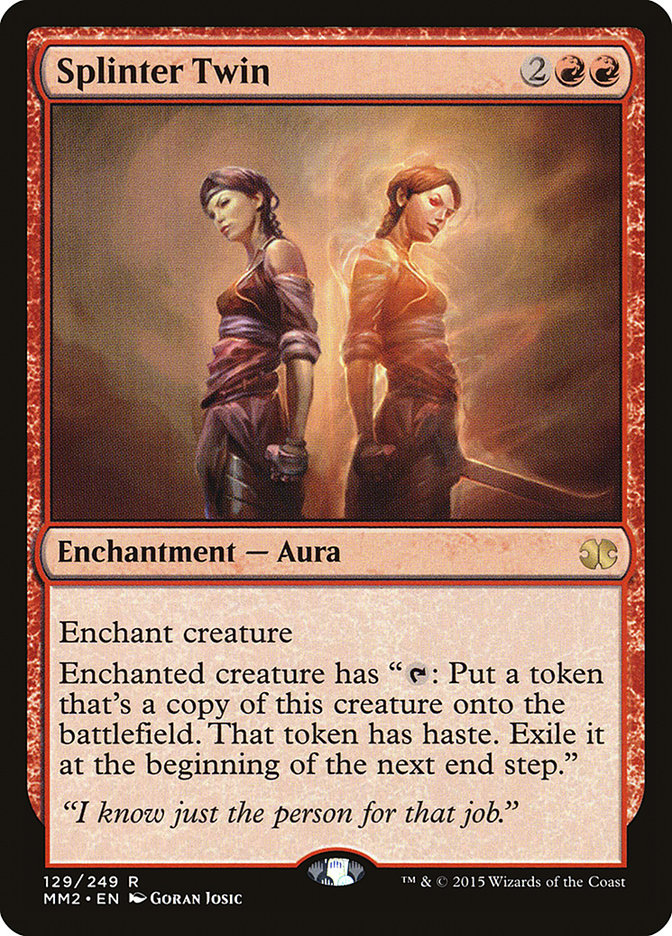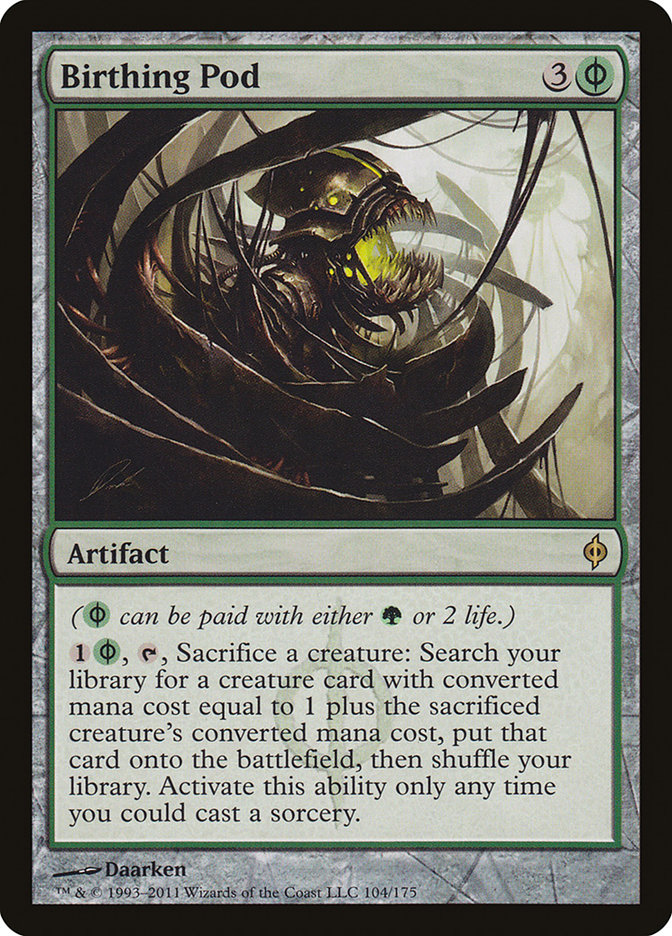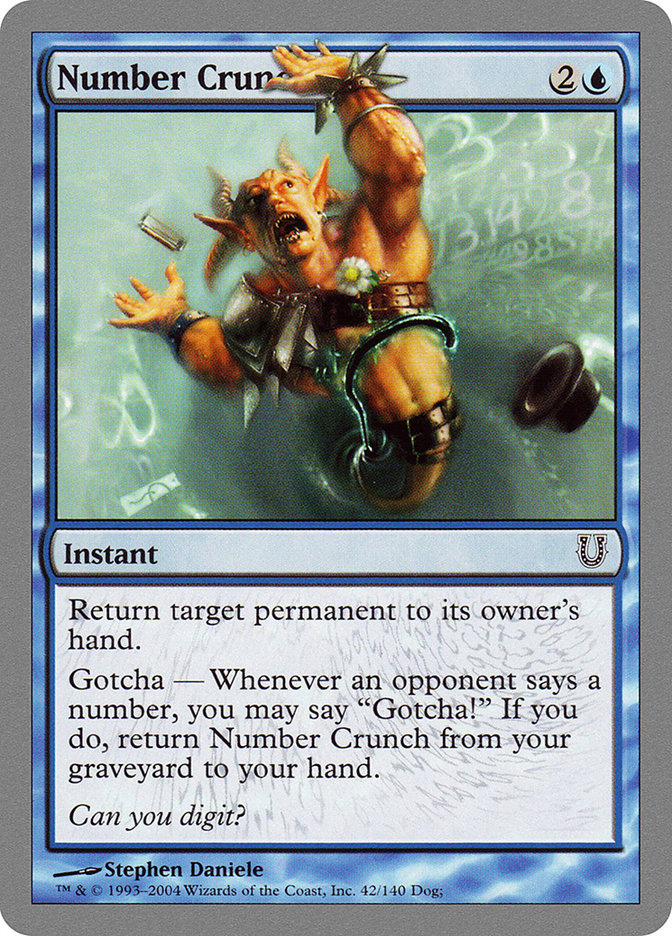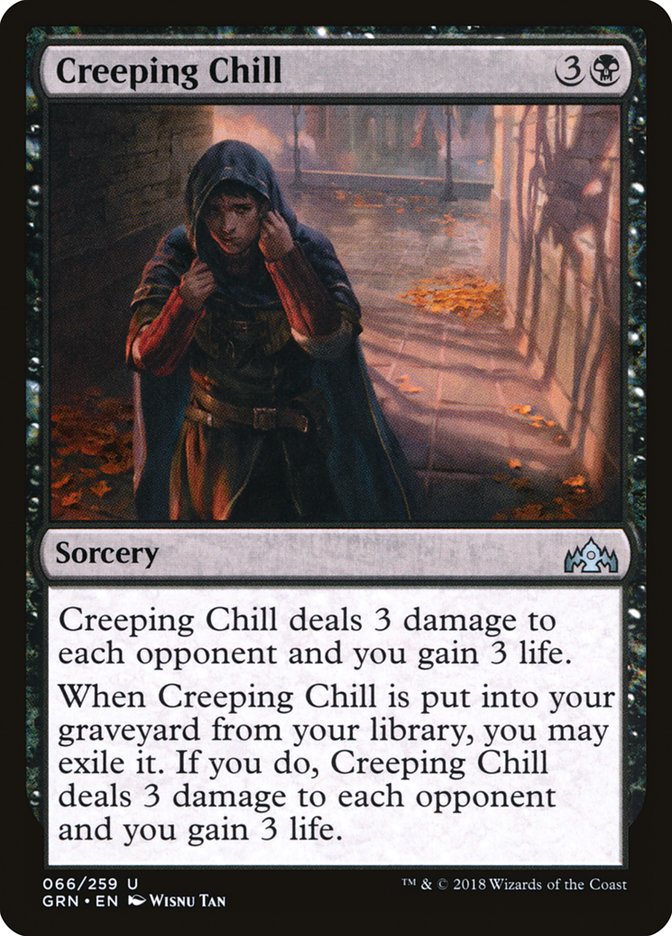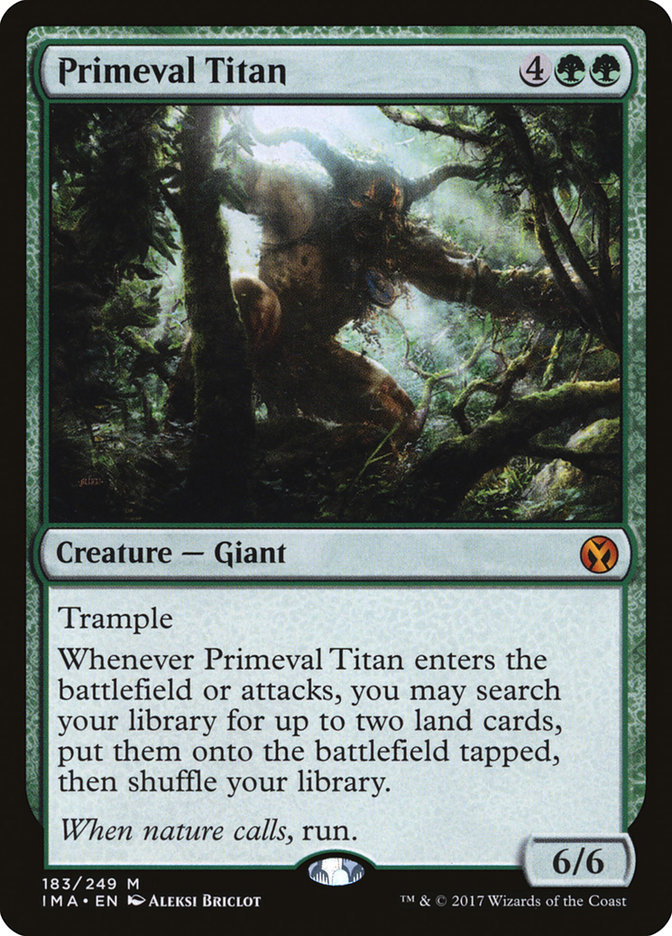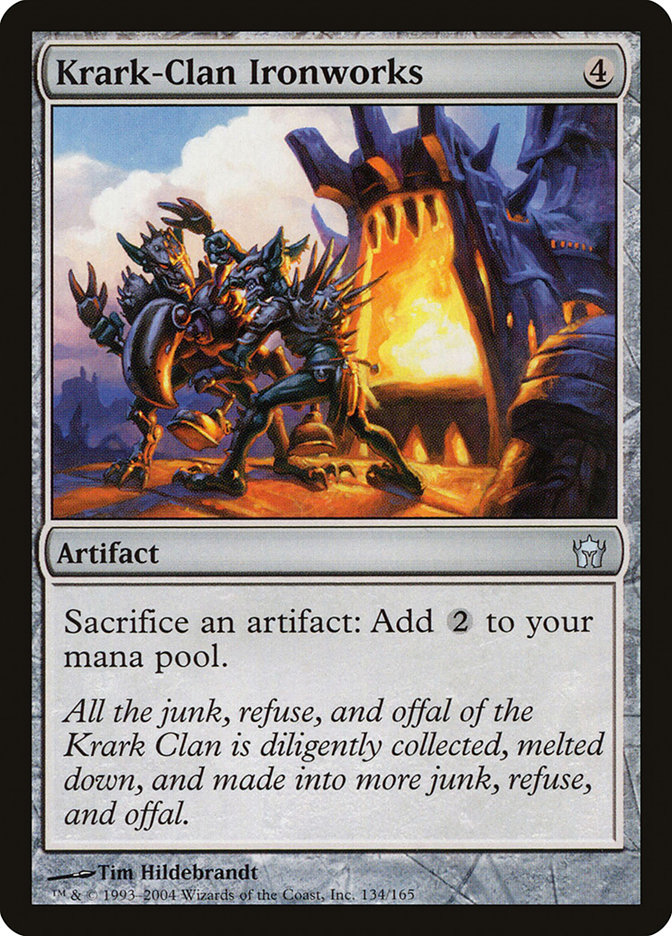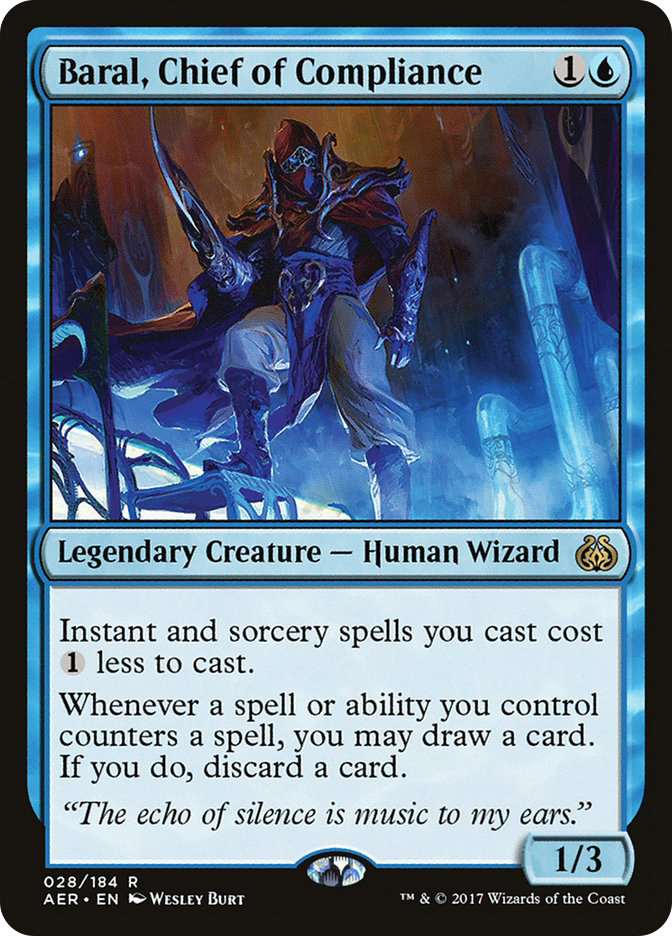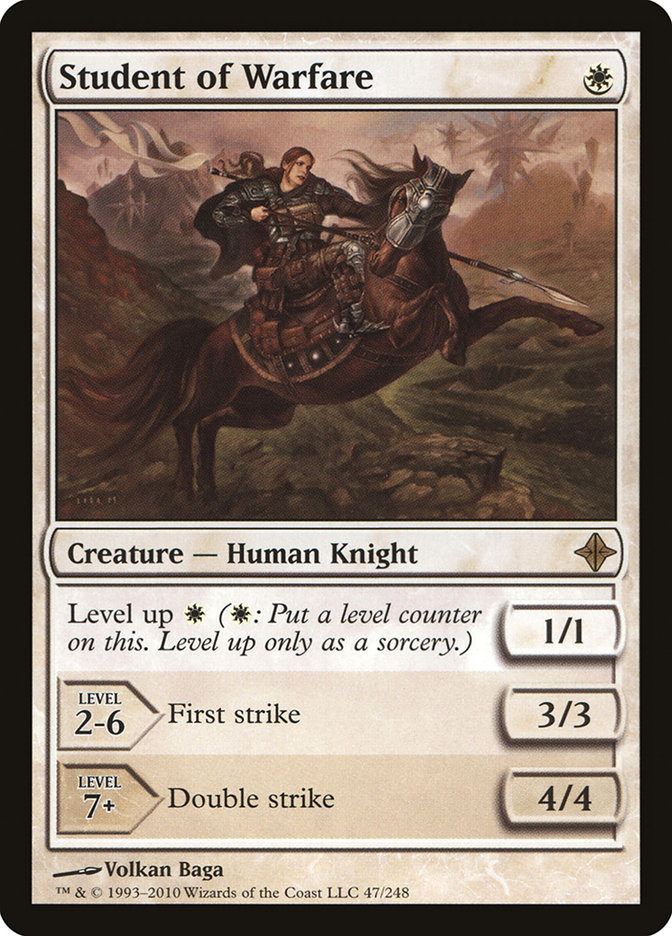The year is 2014. Splinter Twin and Birthing Pod are still legal. You show
up to your local Monday Night Modern tournament and play against a slew of
crazy cards and decks, things like Soul Sisters and Living End. Scapeshift
still plays blue cards.
Life was good (sort of).
Modern’s popularity over the last handful of years has exploded. A
combination of a constantly expanding card pool (frequently adding very
powerful cards to shake up the format every set or two) and decks generally
staying viable for an indefinite amount of time has drawn in massive
amounts of players to the format. Players discovered a deck they liked,
then spent weeks, months, maybe even years honing and tuning their beloved
strategies to the ever changing Modern metagame.
Fast forward to right now, and to say the rules of Modern have changed is
an understatement.
The format took a shift from being a more “casual friendly” and “play what
you want” style to a much leaner, more efficient one, backed in part by the
constant spikes in power various decks receive every time a new set is
printed. The latest example of this would be Dredge and the printing of
Creeping Chill in Guilds of Ravnica.
Beyond this reason, there’s a very big factor that has come into play
(entered the battlefield?) as far as Modern’s metamorphosis from its
earlier more casual days into the #1 competitive format in Magic: the
Gathering: the spike in Modern Grand Prix and SCG Tour Opens from 2015-2018
and the data that came with it helped drive the format to a more defined
metagame.
Data, data, data.
For any student of the game, examining metagame shifts, from deck selection
to specific card choices, is fueled by a weekly report on the top decks
that rise above the rest. For Grand Prix, we see the top 32 decks that
performed well on a given weekend. The same is true for SCG Tour Opens.
Every day, WotC posts a series of unique decklists on their website that a
given user was able to claim a trophy with in a Magic Online Competitive
Constructed League. These decklists are usually aggregated, sorted, and
shared on a variety of different websites for players to examine to get
general ideas on how each Constructed format’s metagame is shaping up from
week to week.
For Modern, the enormous spike in frequency of Premier level tournaments
over the last few years helped drive the format further and further away
from a “play what you know” format to an arms race to find the most
efficient killing machine to compete with the other decks in the format.
The influx of data points helped more studious players examine and discover
trends in the Modern metagame and allow them to leverage this knowledge
above other players to gain an advantage on a higher level. This, in turn,
took away from the skill gap that masters of specific strategies in Modern
could use to defeat less knowledgeable opponents.
The spike in Modern Grand Prix and Opens from 2015-2018, and the data
that came with it, helped drive the format to a more defined metagame.
When I’m not writing articles or playing in Opens on the weekend, I’m
working my day job as a Data Engineer. Data these days is a very important
driver for business, as it helps you make much more informed decisions on
how to better serve your customers and put yourself a step ahead of your
competition. This same philosophy carries over to Magic pretty seamlessly;
the more empirical evidence you have to back up claims or decisions you
make while testing or preparing for Magic tournaments, the more likely you
are to hit your mark on aspects like deck choice, sideboarding choices, and
flex slot options.
The Modern format is a format that needed these data points to gain any
semblance of cohesive metagame structure. Modern has always been lauded as
a format with dozens and dozens of strategies that, when played well, can
win any given Modern tournament. This was true, in part, because back in
the 2011-2014 era of Modern, there simply wasn’t enough data to suggest
that anything short of Splinter Twin and Birthing Pod decks were
consistently capable of reaching the elimination rounds or otherwise
winning Modern tournaments.
At this point, I’ve laid out a pretty good base on how and why
Modern has changed so much in the last few years. Next, I’d like to cover
the consequences of these changes and how they should impact your
decision-making regarding the format heading into 2019.
#1: Modern has a metagame that moves much quicker than it used to. Learn to
adapt accordingly.
SCG Dallas in late October this season was the breakout tournament and
triumphant return of Modern Dredge. Since the deck lost Golgari Grave-Troll
to the Modern banned list for the second (and likely last) time, its
ability to win greatly diminished and the deck all but disappeared from the
format. Guilds of Ravnica turned Modern on its head in several
ways, but the biggest change was the printing of Creeping Chill, which gave
the deck a potential twelve points of damage and lifegain in the deck, completely free of charge.
It put two players into the top 4 of the event and a smattering of other
pilots into the top 32.
What happened the following weekend at SCG Charlotte still resonates with
me two months later because it was the fastest I had ever seen the Modern
format adjust on a week to week basis. Ross Merriam ended up being the
highest finishing pilot with Dredge, coming in 16th place, and that was
likely in no small part because of Merriam’s affinity for the deck and
ability to play it very well.
However, the finals of SCG Charlotte was decided in an Amulet Titan mirror
match of all things! The format turning on Dredge in just one week made me
realize just how much faster Modern moves in 2018 compared to previous
years and how quickly players are willing to adjust not just the
sideboards, but entire deck choices to next level the metagame.
SCG Charlotte and the few Opens to follow saw a renaissance for Primeval
Titan decks like Amulet Titan and TitanShift due to their outstanding
Dredge matchup, and have since adjusted to coexist in the format, as Dredge
has proven itself to be able to withstand some of the hate cards players
will play.
It’s the hateful decks that give it trouble.
This leads to my next point:
#2: It’s time to learn to pivot in Modern not on the sideboarding/flex slot
level, but on the deck level.
It’s no insignificant fact that one of the largest allures to Modern is
that it’s easy to pick up one deck and play it for a long time. And as I
previously discussed, it used to be a completely acceptable strategy to
just adjust your sideboard for whatever deck you liked to adjust for
metagame shifts and have it be sufficient.
Thanks to all the data we have on Modern right now, it makes much more
sense to shift between decks depending on the metagame instead. These days,
we have a much easier time identifying what’s winning slightly more than
the rest.
A lot of the top decks in the format right now all fight you in a different
way. For reference, I consider these five decks to be your five best decks
in Modern right now:
Creatures (12)
Lands (18)
Spells (30)

Creatures (6)
Lands (18)
Spells (36)
- 4 Krark-Clan Ironworks
- 1 Pyrite Spellbomb
- 3 Chromatic Sphere
- 4 Mind Stone
- 3 Engineered Explosives
- 4 Terrarion
- 4 Chromatic Star
- 4 Ancient Stirrings
- 4 Mox Opal
- 1 Spine of Ish Sah
- 4 Ichor Wellspring
Sideboard

Creatures (18)
Lands (19)
Spells (23)

Creatures (30)
- 4 Noble Hierarch
- 2 Phantasmal Image
- 1 Geist of Saint Traft
- 4 Drogskol Captain
- 3 Reflector Mage
- 1 Rattlechains
- 4 Spell Queller
- 2 Selfless Spirit
- 4 Mausoleum Wanderer
- 1 Remorseful Cleric
- 4 Supreme Phantom
Lands (21)
Spells (9)

Creatures (17)
- 4 Azusa, Lost but Seeking
- 2 Trinket Mage
- 4 Sakura-Tribe Scout
- 4 Primeval Titan
- 1 Hornet Queen
- 1 Reclamation Sage
- 1 Walking Ballista
Lands (27)
Spells (16)

Let’s break it down:
-
Izzet Phoenix:
Tries to win the game with Thing in the Ice, Monastery Swiftspear,
Arclight Phoenix, and burn spells. Top end consists of Crackling
Drake and lategame recursive Arclight Phoenix chains. Strong
against control and midrange decks, weaker against aggressive
decks, fast combo decks, and occasionally, graveyard hate. -
Ironworks
: Tries to win the game by resolving Krark-Clan Ironworks, then
generating a ton of mana and card advantage, all while attempting
to infinitely recur Pyrite Spellbomb or Spine of Ish Sah to create
an unlosable gamestate. Strong against spot removal,
non-interactive aggressive decks, and can struggle against artifact
and graveyard hate, as well as disruptive aggro decks like Spirits. -
Dredge:
Tries to win the game by constantly recurring threats like Prized
Amalgam and Bloodghast, as well as racing the opponent and
controlling their battlefield via Conflagrate and Creeping Chill.
Strong against control/midrange decks and other aggressive
creature-based decks. Weak to graveyard hate and linear combo
decks. -
Bant Spirits:
Tries to win the game the good old-fashioned way: attacking with
creatures. All these creatures disrupt the opponent in some way,
either by making their spot removal/sweepers weaker, countering
opposing instant and sorcery spells, and nabbing four or less mana
spells with Spell Queller. Strong against combo decks, other
creature decks (like Humans), but weaker to decks that can get
under Spirits or matchups where the strategy can ignore Spell
Queller. -
Amulet Titan:
Tries to win the game by utilizing Amulet of Vigor and Primeval
Titan to kill the opponent as fast as turn 3. One of the few decks
in the format with a fabled turn 2 kill, given the proper
resources. Very strong against just about everything short of Blood
Moon. It doesn’t have a lot in the way of interaction for other
spell based combo short of a well-timed Pact of Negation and the
ability to pay for it, so it can occasionally struggle with other
faster combo decks.
Following the brief synopsis of each deck above, you may notice something
about how they all differ: they all attack your opponents on a different
axis.
-
Izzet Phoenix is the most aggressive of the bunch and looks to get
your opponent dead quickly, but in a mildly less degenerate way
than Dredge, Amulet Titan, or Ironworks. -
Ironworks aims to also make your opponent’s spot removal useless,
but also doesn’t even need the combat step to win the game. -
Dredge can out-grind any number of non-exile based removal and
utilizes the graveyard almost as if it was a second hand, something
no other deck in Modern can do. -
Bant Spirits fights the fair fight by both attacking the opponent
and disrupting them along the way, all while utilizing the best
sideboard cards Modern has to offer. -
Amulet Titan, thanks to a seemingly endless supply of tutors and
mana, can overpower just about anything not properly equipped with
the tools to disrupt them or otherwise kill them before it matters.
The fact of the matter is, Modern players will simply continue to do what
they’ve been doing and rather than switch strategies, will simply
overcompensate their sideboards for whatever did the most winning the
previous weekend instead. Ironworks just take down a Grand Prix? Expect an
uptick in Stony Silences and Ancient Grudges, with a splash of graveyard
hate for good measure. Dredge make up half of the top 8 of an Open? Time to
bust out a boatload of Rest in Peace and Relic of Progenitus. The five
decks I listed are all very strong choices that let you pivot week-to-week
to ensure that you’re still playing something a cut above the rest, all
while dodging the target placed on whatever dared crush the last premier
event.
The best advice I can give anyone trying to stay a step ahead of the Modern
metagame is to pick at least two, but preferably three, of the above decks,
learn them inside and out, and cycle between them as the format shifts.
Modern still rewards players for playing what they know well…to an
extent. The biggest difference now is the extra layer of preparation
required outside of regular testing to study what the metagame will be
targeting and staying one step ahead of the competition.
Don’t get caught up in the everflowing shifts in the Modern metagame. In
2018, data dictates the decisions we make in our lives every day and forces
us to make these decisions at a faster rate than we used to. Magic is no
different.
Get studying!


